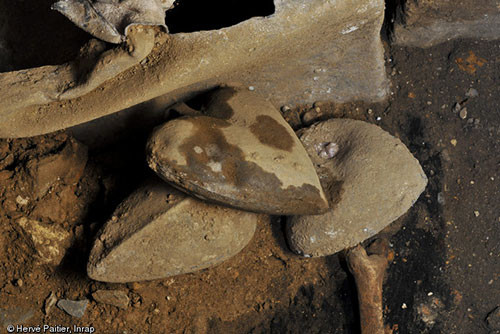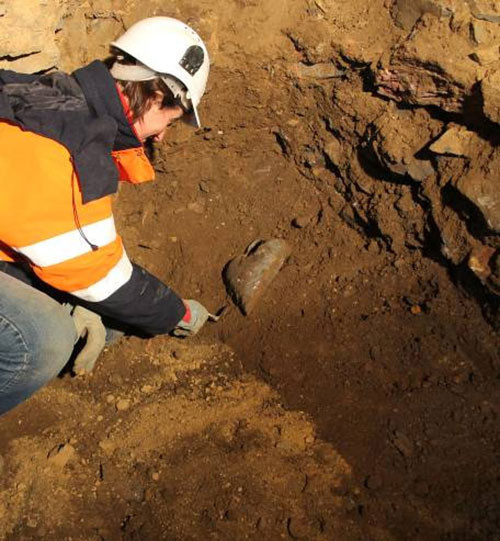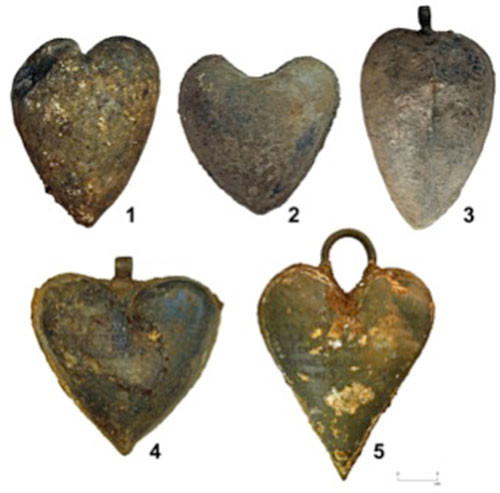France: Five 16th century embalmed hearts of elite discovered in heart-shaped urns

Five preserved hearts have been discovered inside a burial vault of an elite 16th-century French family – with the muscles having been cut out of the bodies and placed inside heart-shaped urns. One of the hearts belonged to a knight, who had it cut out after his death and buried with his wife.
The hearts were found by archaeologists with the Institute for Preventive Archaeological Research while they were excavating the basement of the Convent of the Jacobins in Rennes.

Several grave sites were uncovered dating back to the late 16th and early 17th century. Inside the burial vaults, they found five heart-shaped lead urns and inside each, embalmed hearts. A team of radiologists was called in to examine the hearts to learn more about the health conditions of those buried in the vaults.
"We tried to see if we could get health information from the hearts in their embalmed state, but the embalming material made it difficult," said study author Fatima-Zohra Mokrane. "We needed to take necessary precautions to conduct the research carefully in order to get all possible information."

Initially, MRI and CT scans gave little information about the health of the individuals the hearts had come from. But after careful cleaning, they were able to identify structures, such as chambers, valves and coronary arteries. They then rehydrated the tissue to identify myocardial muscles.
One of the hearts was too poorly preserved to study but of the remaining four, a wealth of heath data could be obtained. Three showed signs of disease, with one having plaque on the coronary arteries. One heart appeared healthy with no sign of disease. "Since four of the five hearts were very well preserved, we were able to see signs of present-day heart conditions, such as plaque and atherosclerosis," Mokrane said.

Researchers at the site later discovered one of the hearts found belonged to Toussaint Perrien, Knight of Brefeillac, whose heart was removed and buried with his wife, Louise de Quengo, Lady of Brefeillac. Her preserved body was also found at the site.
"It was common during that time period to be buried with the heart of a husband or wife. This was the case with one of our hearts. It's a very romantic aspect to the burials," Mokrane added. The findings were presented at the annual meeting of the Radiological Society of North America.
De Quengo's body was discovered earlier in 2015 year in an exceptionally well-preserved state. Her hair, skin and brain were mostly still intact, researchers said. She died in her sixties and was dressed in religious robes including shoes and a cap. The heart of her husband was found next to her and was said to have been removed "with real surgical mastery".
© Copyright IBTimes 2025. All rights reserved.





















